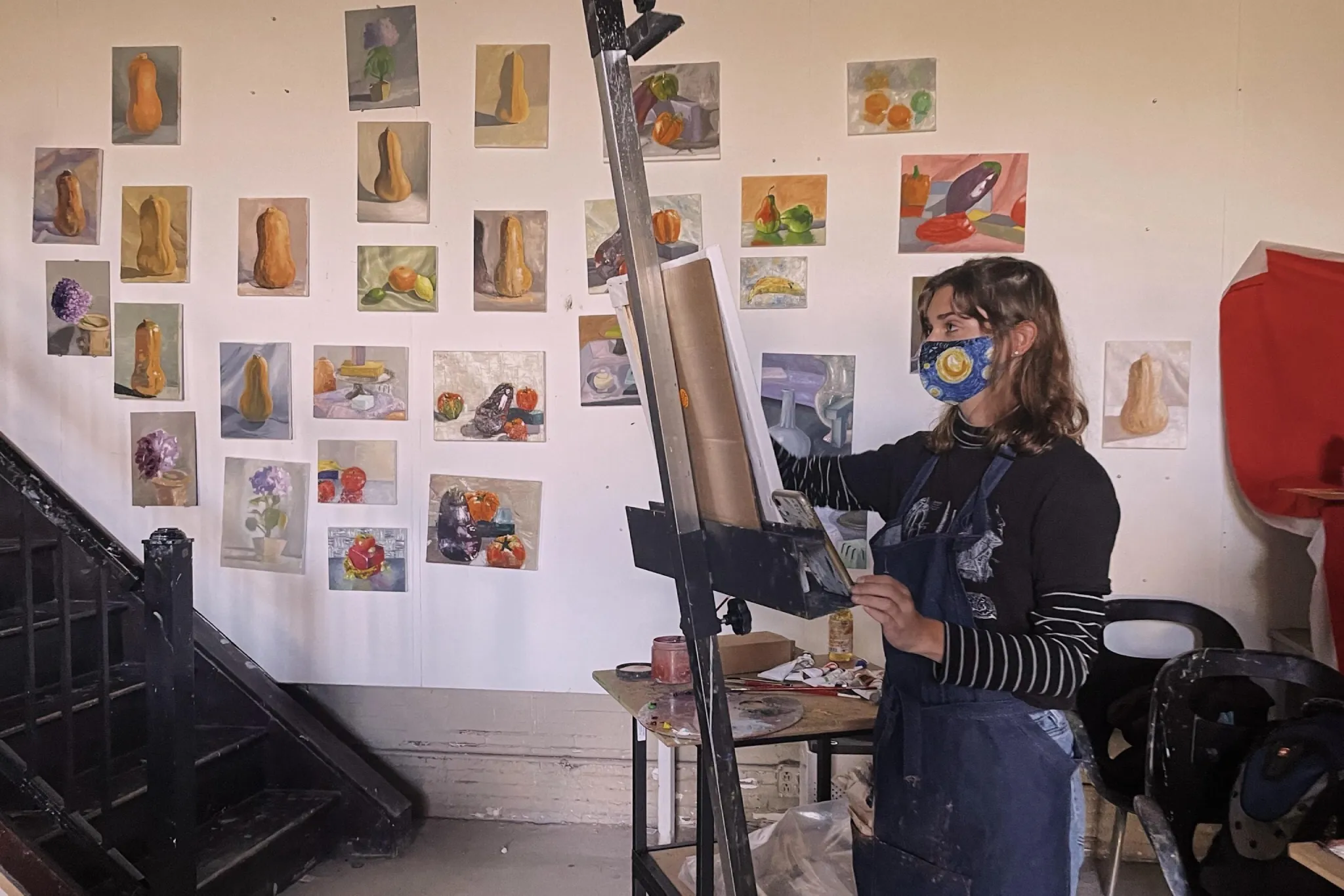The Art of Patience in Painting
“Finally,” I thought to myself last spring while choosing classes for my upcoming sophomore year. “This is the class I’ve been waiting for.” I added Painting I to my registration and sat back with relief. This would at long last be my first year of in-person learning at Arcadia, and I had been itching to reach the painting classes. Painting, particularly in acrylic paint and watercolors, made up the majority of my high school portfolio and was what I prided myself most in as an artist.
Fast forward to my first day of Painting 1: I arrived 15 minutes late due to a pre-approved overlap between my previous class and Painting. I was stressed out and quite disoriented in a classroom of strangers who had already started painting. A week before, after the syllabus was published, I realized the class only used oil paint. While I was excited to learn a new material, I was very inexperienced.

After my professor helped me set up and showed me how to mix the paints, I was ready to start my black-and-white still life. Having practiced still-lifes for years in high school, I was fairly confident that I could manage painting a small, textured vase. I painted in the darks and the lights with vague blocks as I would any painting, and prepared myself to start refining the vase.
As the weeks went on, I picked up techniques to avoid overblending. My already refined skills of how to perceive lights, shadows, and depth took over, and now I am becoming grounded as an oil painter.
– Micah Gordley
Oil paints, I would soon realize, are notoriously blendable and take ages to dry, unlike acrylic paint (which dries fairly quickly into a plastic) or watercolor (which is also blendable, but dries quickly). Within minutes, my painting started to mush together and, by the end of the class, was so overworked that it was both a poor representation of the vase and one of my worst paintings to date.
This was a frustrating mental and physical block, especially as someone whose major is based entirely around realism and precision. As the weeks went on, I picked up techniques to avoid overblending. My already refined skills of how to perceive lights, shadows, and depth took over, and now I am becoming grounded as an oil painter.
Above any trick or skill I could finesse, allowing myself patience to learn and build my skills has allowed me to grow as an artist more than anything. Slowing down to mix the exact color you need, taking the time to sketch out the layout to make sure it’s accurate, or giving attention to even the glisten in the eyes gives you the foundation to provide attention to your art without second thought.
Progress, especially in the art world, can be gradual, but having patience allows freedom to grow in your skills and artistry.



